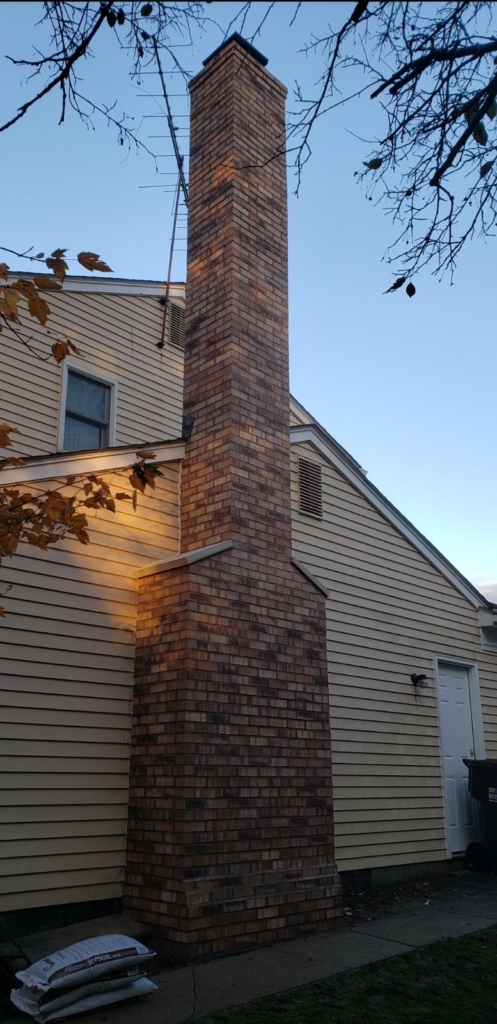A chimney inspection is a thorough examination of your chimney’s interior and exterior to identify any damage or potential safety hazards. It is recommended to have your chimney inspected at least once a year, preferably before the start of the heating season. Here are some of the things that are checked during a chimney inspection:
- Structural Integrity: The inspector will check the overall condition of the chimney, including the chimney cap, crown, and flue liner. They will look for any cracks, gaps, or signs of wear and tear that can compromise the chimney’s structural integrity.
- Blockages: The inspector will also check for any blockages in the chimney. This can include debris, animal nests, or creosote buildup. Blockages can restrict the flow of air and gases, which can cause smoke and harmful gases to enter your home.
- Combustion: The inspector will test the chimney’s ability to handle the combustion byproducts effectively. They will check for any buildup of creosote, a highly flammable substance that can cause a chimney fire.
- Ventilation: The inspector will check the ventilation system to ensure that there is adequate airflow in the chimney. Proper ventilation prevents the buildup of harmful gases like carbon monoxide, which can cause serious health issues.
- Moisture: The inspector will also check for any signs of moisture in the chimney. Moisture can cause damage to the chimney’s masonry, leading to cracks and deterioration.
- Chimney Cap: The chimney cap is checked for proper installation and condition. The cap keeps debris, rainwater, and animals from entering the chimney.
- Chimney Crown: The crown is checked for cracks, holes, and water damage. A damaged crown can allow water to penetrate the chimney, leading to further damage.
Once the inspection is complete, the inspector will provide you with a report that outlines any issues found during the inspection. If there are any safety concerns, the inspector will recommend repairs or cleaning.
Now that you know what is checked during a chimney inspection, the next question is, how do you know if your chimney is safe to use? Here are some signs that indicate that you need a chimney inspection:
- Smoke: If you notice smoke coming back into your home when you light a fire, it could be a sign of a blockage or ventilation issue.
- Smell: If you smell a strong odor coming from your chimney, it could be a sign of a buildup of creosote or a blockage.
- Animal Nests: If you notice any signs of animal nests or debris in your chimney, it is time to have it inspected.
- Soot Buildup: If you notice a buildup of soot in your fireplace or on the walls surrounding it, it could be a sign of poor ventilation or a blockage.
- Water Damage: If you notice any signs of water damage, such as discoloration or cracks in your chimney, it is time to have it inspected.
If you experience any of these signs, you should have your chimney inspected immediately. A damaged or poorly functioning chimney can cause serious safety hazards and health issues.
So, why do you need to get your chimney inspected? The most important reason is safety. A damaged or poorly functioning chimney can lead to serious safety hazards, such as carbon monoxide poisoning or chimney fires. In addition, regular chimney inspections can help prolong the life of your chimney and prevent costly damage.

